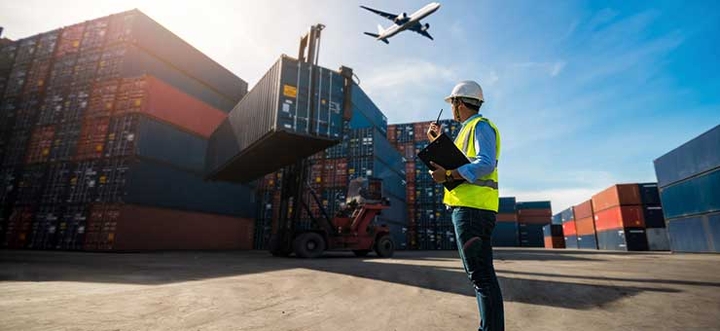SME FAQ: Understanding Export Classification


What is export classification?
Export classification is a way of categorizing products for export using a string of numbers, which are usually called commodity codes or export classification codes. Export classification codes mean that declarations can be completed and duties can be calculated.
If you’ve classified your products correctly, it will tell you if any controls apply to them, and if you need to obtain an export license. If you’re based in the US, you’ll need to know whether your item has an Export Control Classification Number (ECCN), which describes the item and its licensing requirements. There’s further information on the US Department of Commerce’s website.
If you’re based in a different country, check your government’s website for information about export codes and controls. For example, the UK government’s website and the South African government’s website have information about controlled items.
What is an export classification number?
The export classification number is a unique identifier that is assigned to every item that is exported from the United States. The number helps to track the item and ensure that it is not diverted to a country that is not authorized to receive it. The classification number is also used to determine the level of security that is required for transporting the item.
The Export Administration Regulations (EAR) provide the regulations for assigning export classification numbers. The EAR are administered by the Bureau of Industry and Security (BIS), which is a part of the United States Department of Commerce. When an item is exported, the exporter must submit a request for an export classification number to BIS.
The export classification number helps to ensure that items are not exported to unauthorized countries and that they are transported using the correct level of security. It also helps to track items through the export process and provides information about the controls that are in place for each item.
What do export classification codes look like?
The export classification number consists of four parts: the commodity code, the export control classification number (ECCN), the license requirement, and the licensing authority. The commodity code is a five-digit number that is assigned to every type of item. The ECCN is a five-digit number that is assigned to every type of controlled item. The license requirement indicates whether a license is required for exporting the item and the licensing authority indicates which agency is responsible for issuing licenses.
Codes are generally eight to 11 digits long. Most countries use the Harmonized System (HS) for the first six digits of the code, followed by several digits that are country specific. The Harmonized System codes are international codes developed by the World Customs Organization. Over 98% of goods traded internationally are classified using the HS.
ITAR, CCL, and EAR99 Classifications
Export control regulations can also classify goods as ITAR, CCL, and EAR99.
What is ITAR?
The International Traffic in Arms Regulations (ITAR) is a set of government regulations that control the export and import of defense-related articles and services. The ITAR is administered by the Directorate of Defense Trade Controls (DDTC), which is part of the U.S. Department of State.
The ITAR regulates the export of defense-related items, including aircraft, weapons, military equipment, and related technology. It also regulates the export of certain technical data and defense services.
If you are exporting a product that falls under the ITAR, you will need to obtain an export license from DDTC. Failure to comply with the ITAR can result in civil penalties or criminal prosecution.
What is CCL?
The Commerce Control List (CCL) is a list of items that the United States Government regulates for export. The items on the CCL are broken into categories, such as firearms and explosives, nuclear materials, and software. Each category has its own rules about who can export which items and how they must be exported.
For example, the United States requires a license to export most items on the CCL to certain countries. A license is an official document that gives permission to export an item. The United States also requires companies to report any exports of CCL items. This reporting helps the United States make sure that everyone is following the rules about exporting these items.
The Commerce Control List is updated regularly as the United States learns more about which items it needs to regulate for export. You can find the most recent version of the CCL on the Export Administration Regulations website.
What is EAR99?
EAR99 is a classification assigned by the United States Department of Commerce to certain items that do not require a license for export. To be classified as EAR99, an item must meet two criteria: it must be determined to be of a type that is not subject to munitions controls, and it must not meet the definition of a "controlled item."
The Department of Commerce assigns EAR99 classification to a wide variety of items, including some that may seem surprising. For example, common items like kitchen knives and screwdrivers can fall into this category, because they are not considered to be weapons or defense-related products. However, there are also some more specialized items that are included in the EAR99 designation, such as certain types of medical equipment and laboratory supplies.
The EAR99 designation is important because it helps to simplify the process of exporting goods from the United States. By classifying certain items as EAR99, the Department of Commerce makes it easier for exporters to know which products do not require a license for export. This can be helpful for companies that are looking to export products overseas, as it eliminates the need to apply for a specific license for each product.
How do I find the right export code for my product?

To find the right export code for your product, you need to know some details about it, including the materials that it’s made from, the way it’s been manufactured, its purpose and how it functions, and how it’s presented or packaged.
For some products - including food and chemicals - you’ll also need more detailed information, like precise ingredients. If your product is made of more than one material, you usually classify the item according to the higher percentage of content, but there are some exceptions.
There are a few ways to find the export code for your product. The first is to look it up in the Harmonized Tariff Schedule (HTS). This is a comprehensive list of all the products that have an export code assigned to them. You can find the HTS online or in book form at most libraries.
If you don't want to search through the entire HTS, you can also use an online tool like Export Genius. This tool allows you to search by product name or keyword and will give you the export code for the product you are looking for.
Finally, if you are still unsure of which export code to use, you can contact your local customs office. They will be able to help you find the right code and answer any questions you may have about exporting products.
If you’re exporting products that have been manufactured by someone else, you could ask the manufacturer if they’ve already classified the products. Your freight forwarder may also be able to help you with export codes. However, remember that as the exporter, it’s ultimately your responsibility to choose the right code for your product.
Can I use one export code for several products?
If several items are packaged together, you usually need to classify each item individually. However, if the items can only be used together and won’t work separately, you can usually classify them under a single code. You should choose the code that applies to the most significant item in the set.
What happens if I use the wrong export code?
Using the wrong export code can mean your goods are denied entry or seized, and you could also face financial penalties and even legal action. Since misclassification can cost a lot of time and money, it’s really important to choose the right code and to double check it before it’s used on your customs paperwork. If you’re in doubt, your government may be able to help you to classify your products, or you could seek expert advice elsewhere.
Make exporting as simple as possible
With codes, classifications and export controls to navigate, selling your products abroad can feel complicated. It’s crucial to choose a reputable freight forwarder that can help you navigate compliance rules and stay on the right side of regulations. Use Shipa Freight to make shipping as straightforward as possible. Fill in a few details to get a quick online quote in minutes, and book and track your shipment simply and easily.


